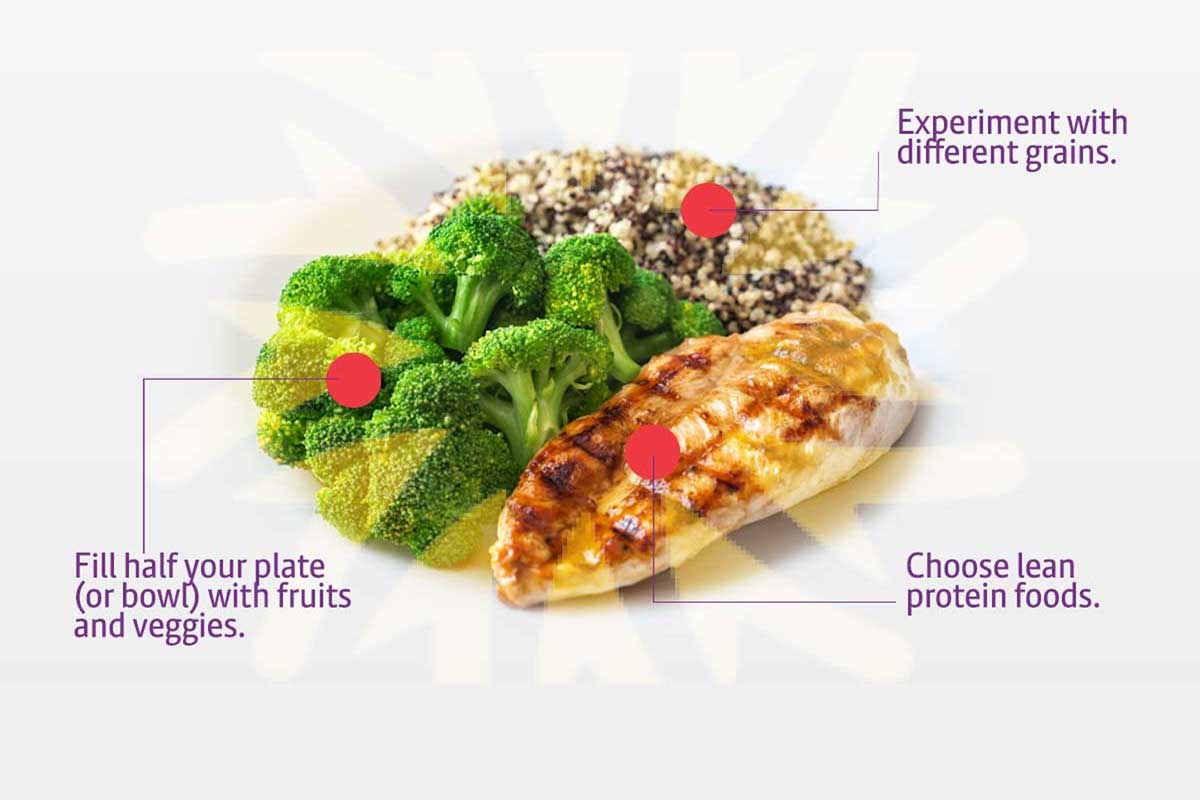Wellness tip: Food for thought on building healthy eating habits
Developing and sticking to healthier eating patterns could be a first line of defense for preventing certain chronic diseases.
Like most things in life, a healthy diet is all about balance. And while everyone deserves a sweet treat every now and again, maintaining that balance could help you prevent the development of chronic disease later in life. Today’s food landscape is rife with indulgence, highly processed foods and copious levels of sugar. Being mindful of how nutrition impacts long-term health and wellness — and what is at stake if poor dietary habits are sustained over time — has never been more important.
According to the 2015-2020 Dietary Guidelines for Americans, issued by the Center for Disease Control and Prevention’s (CDC) Office of Disease Prevention and Health Promotion (ODPHP), roughly 117 million Americans — nearly half of all adults — have at least one preventable disease abetted in part by poor diet, lack of exercise, or both1. These include heart disease, diabetes and even some types of cancers.
There is a plethora of research on the ineffectiveness of dieting for the general population, especially with fad diets that restrict certain types of foods or food groups. These approaches often aren’t sustainable, and can sometimes even be unhealthy. Luckily, there are also plenty of other ways to go about healthier eating, starting with some nutritional education.
One of the best things a person can do for their diet is provide variety. This involves eating foods across all major food groups — proteins, vegetables, fruits, grains and dairy — and, to take it a step further, broadening the menu to include several items from each food group2. Adding variety to your diet is an easy way to ensure your body is receiving the nutrients it needs to support your overall health.
Expanding your palate to include a greater variety of foods is important, as is limiting foods that may taste good, but probably aren’t doing your body any favors from a nutritional standpoint. For example, the ODPHP recommends a daily diet that does not exceed 10% of calories from saturated fats (butter, cheese and high-fat meats) or added sugars (sweet treats, candy and soda). Additionally, sodium, which tends to be higher in processed foods and restaurants, should be limited to under 2,300 milligrams per day for the average adult2.
These changes don’t need to be sweeping, and they will vary based on a person’s specific dietary needs and daily caloric intake recommendation. Starting small can be a way to gain confidence with healthier eating patterns. Would a sandwich hit the spot? Reach for whole-wheat bread instead of white. Feeling peckish? Try a handful of fruit or nuts, rather than potato chips. Instead of overhauling your entire diet from the get-go, start small and with intention, working yourself up as you go.
Perhaps the most important part of establishing healthy eating patterns is perseverance. This is why it can be beneficial to make healthy eating a part of your everyday routine. In the words of the ODPHP, “Think of every day and meal as an opportunity to make a healthy choice.”
Building on all this, the following meal planning tips can be a great place to start to help establish healthier eating patterns that last3:
- Map Out Your Meals: Outline meals you plan to eat for the week and use it as a guide. Be sure to list beverages and snacks, too!
- Find Balance: If you have veggies, dairy and protein at one meal, include fruit and grains in the next to cover all 5 food groups over the course of a day.
- Vary Protein Foods: Choose different protein foods throughout the week. If you have chicken one day, try seafood, beans, lean meat or eggs on other days.
- Make a Grocery List: Start by writing down all of the ingredients for the meals you plan to make. Just be sure to cross off items you already have on hand.
- Love Your Leftovers: Prepare enough of a dish to eat multiple times during the week. Making leftovers part of your plan can save money and time.
- Be Mindful of Portion Control and Sizes: Make half of your plate fruits and vegetables. If you are trying to manage weight by reducing total daily calories, only eat half of the amount of the carbohydrates that you would normally eat.
- Drink Plenty of Water: Avoid sugary beverages such as soda, iced tea, lemonade, coffee and tea (especially made with sugar and creamer) as well as overuse of sports drinks and juices. To stay well-hydrated, enjoy plenty of water throughout the day, with and between meals and snacks.
- Bonus: Meal planning makes it easier to eat healthy on a budget!
Minute changes in diet can have supersized effects on overall health and wellness. In all, being more mindful of eating patterns and understanding which dietary approach works best for you — whether it be preparing meals in advance or having a plan when grocery shopping — is the key to unlocking healthier mealtimes and staving off the risk of preventable diseases.
Sources:
[1] U.S. Department of Health and Human Services and U.S. Department of Agriculture. 2015 – 2020 Dietary Guidelines for Americans, 8th Edition. December 2015. Accessed Feb. 18, 2024, at https://health.gov/our-work/food-nutrition/previous-dietary-guidelines/2015.
[2] Office of Disease Prevention and Health Promotion. 2015 – 2020 Dietary Guidelines for Americans, 8th Edition. “How to Build a Healthy Eating Pattern.” Accessed Feb. 18, 2024, at https://health.gov/sites/default/files/2019-10/DGA_Healthy-Eating-Pattern.pdf.
[3] Medikeeper. “Meal Planning Tips.” Accessed on February 16, 2024, from https://my.wellsparkhealth.com/.



